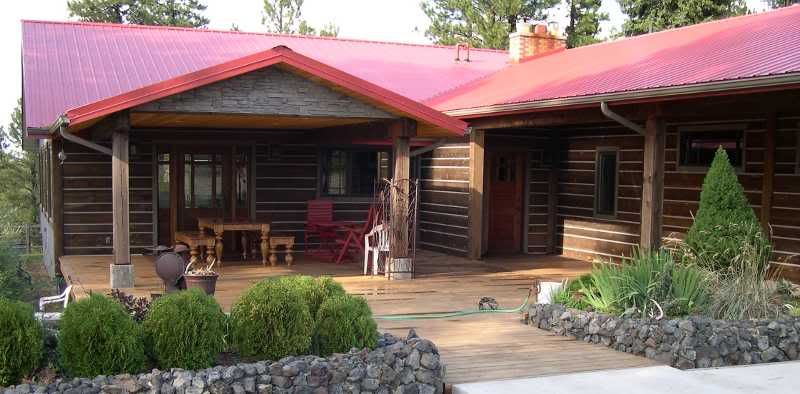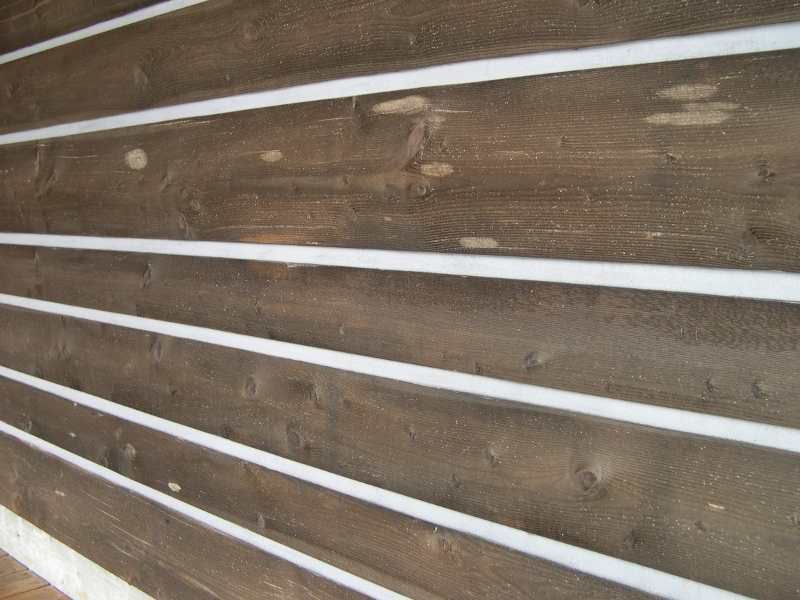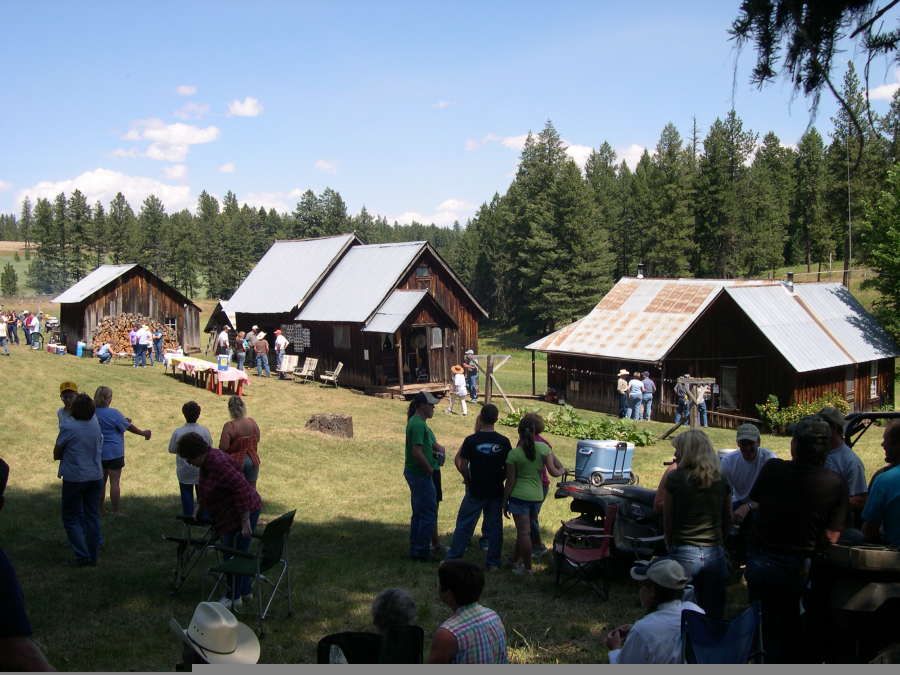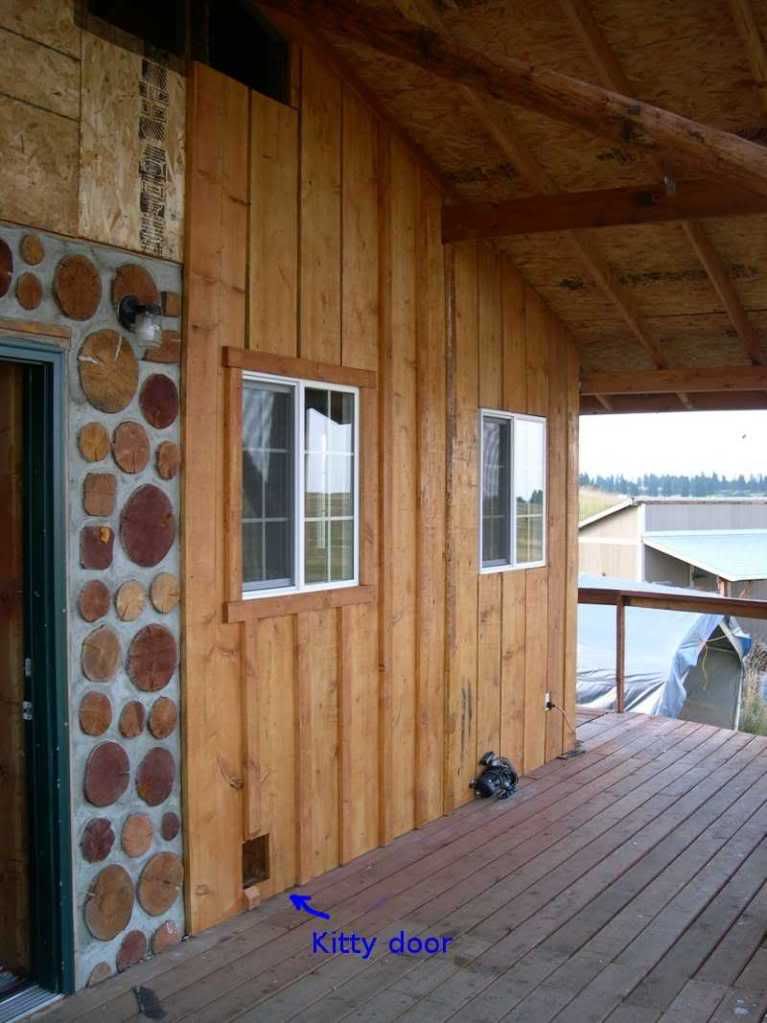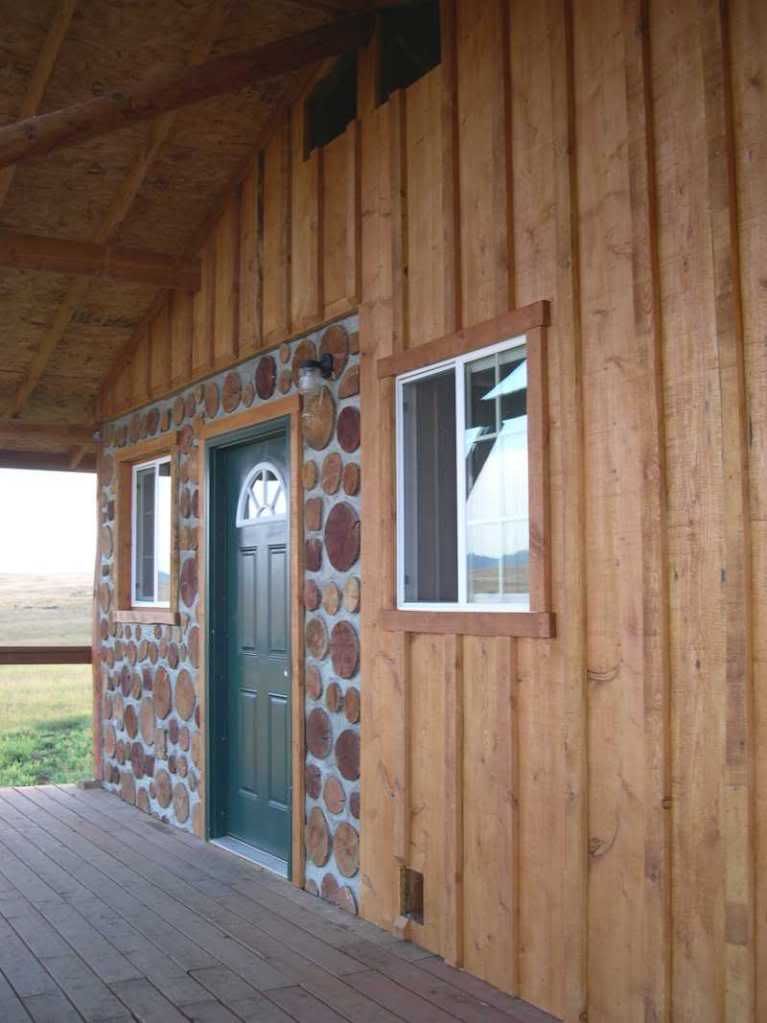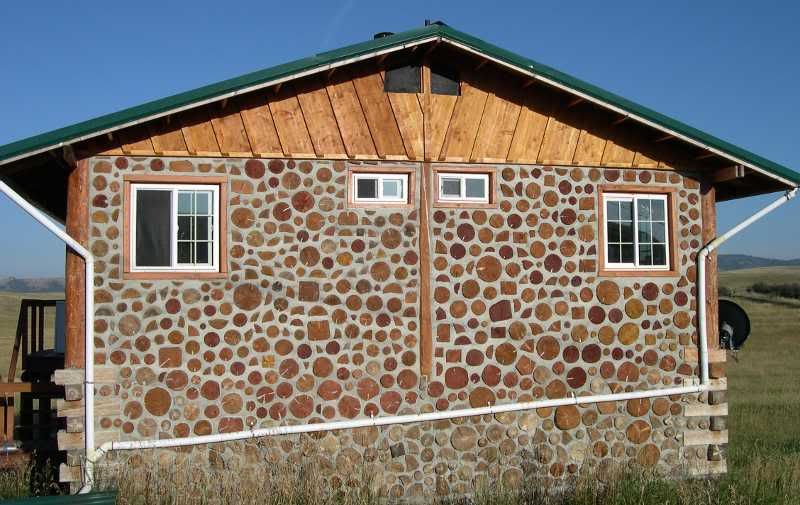mtngun
Addicted to ArboristSite
Here's some of my CSM'd douglas fir being put to use.
The slabs were edged with a worm-drive circular saw, but otherwise left rough. They are random width -- whatever width I was able to get out of a particular slab. One coat of Walmart's honey brown penetrating oil. A few screws in the middle of the board, no screws on the edges of the board, so the board should be free to expand and contract. Eventually battens will cover the edges.
The black stains are mold. Some of the boards were stacked in the drying tent while they were still wet. No big deal, it'll all look the same after a few years.
This project is being done in my so-called spare time, so it'll drag on for several weeks. In addition to the siding, the entire house will be trimmed with CSM'd lumber, inside and out. Just gotta find time to do it.
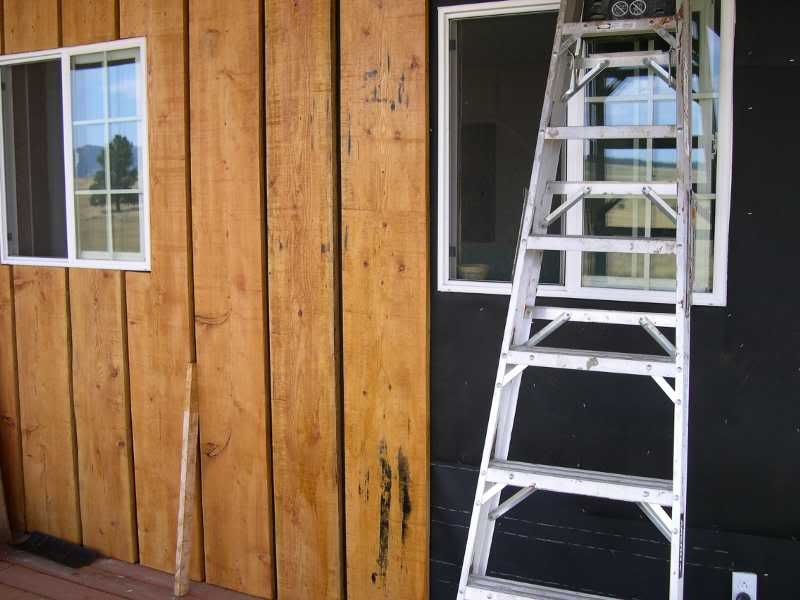
The slabs were edged with a worm-drive circular saw, but otherwise left rough. They are random width -- whatever width I was able to get out of a particular slab. One coat of Walmart's honey brown penetrating oil. A few screws in the middle of the board, no screws on the edges of the board, so the board should be free to expand and contract. Eventually battens will cover the edges.
The black stains are mold. Some of the boards were stacked in the drying tent while they were still wet. No big deal, it'll all look the same after a few years.
This project is being done in my so-called spare time, so it'll drag on for several weeks. In addition to the siding, the entire house will be trimmed with CSM'd lumber, inside and out. Just gotta find time to do it.

Last edited:






